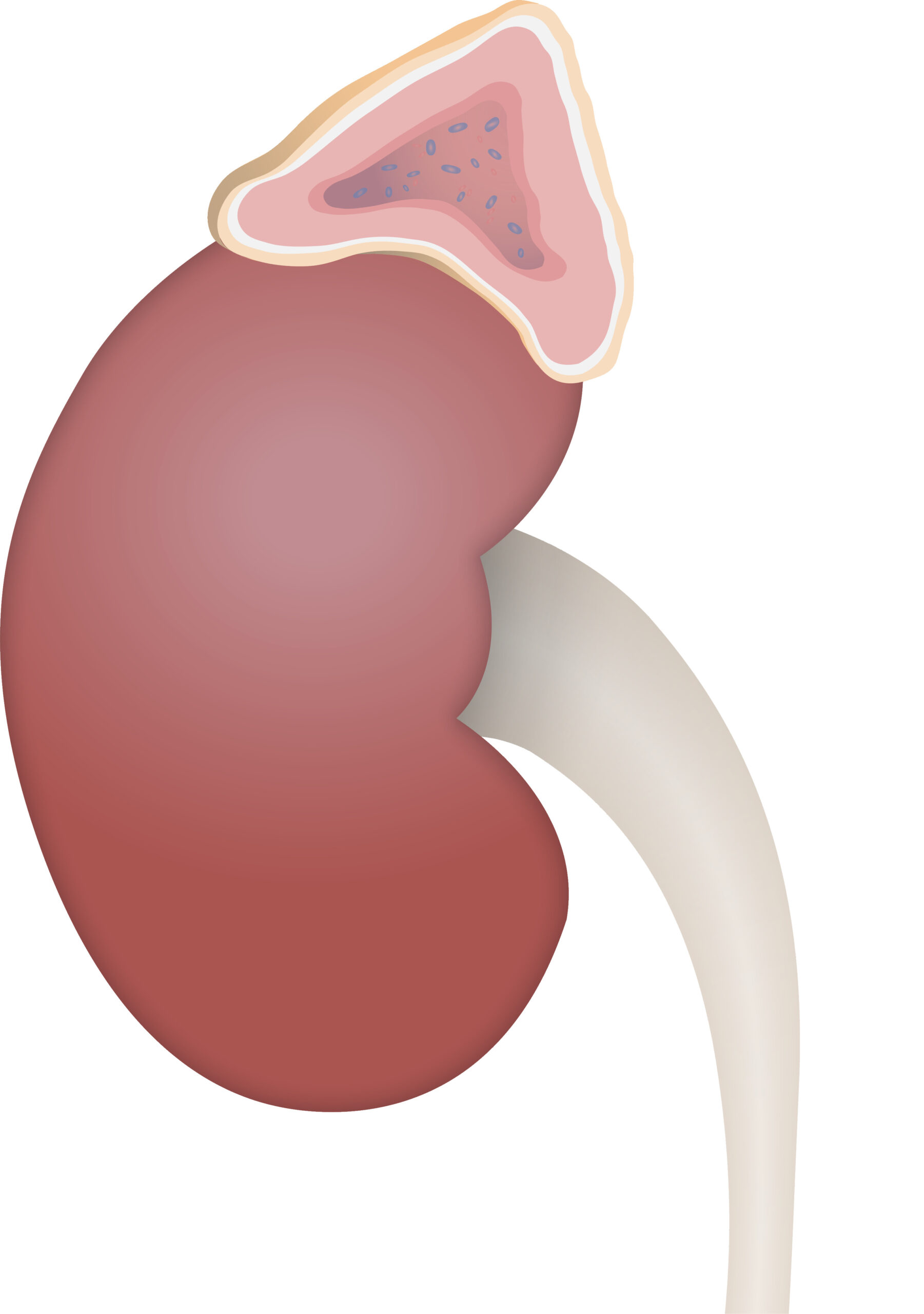Playlist
Show Playlist
Hide Playlist
Adrenal Medulla
-
Slides 05 Human Organ Systems Meyer.pdf
-
Reference List Histology.pdf
-
Download Lecture Overview
00:00 Let’s now look at the medulla. Here, the preparation has used a certain type of stain. And the medulla appears or the cells in the medulla appear to be stained with this brownie pigment. They’re called chromaffin cells because they react with the chromic component of the stain or the dye used. And these chromaffin cells make out the bulk of the histological component or tissue within the adrenal medulla. 00:35 These chromaffin cells are actually postsynaptic neurons that have lost the plot. They’ve gone in a different direction. That’s why I’ve put a question mark up against their name in the heading on this slide. The adrenal medulla was sort of destined to be an autonomic ganglion, a parasympathetic autonomic ganglion. Parasympathetic autonomic ganglia are located either within the organ or very next to the organ. And they contain preganglionic fibres coming from this central nervous system that then synapse with postganglionic fibres in the ganglion themselves and then they travel very short distances to the target organs and cells that they are destined to control or influence. What happened during the development of the adrenal medulla is that these cells, these chromaffin cells decided to become neurosecretory. 01:38 They didn’t develop external processes and become true postganglionic neurons, true postganglionic sympathetic neurons. And I've mentioned earlier the influence of the blood supply drain the cortex on cells in the medulla. Well, one idea is that the glucocorticoids that are secreted by the adrenal cortex by the zona fasciculata, they percolate down through the capillary networks in the adrenal cortex into medullary region, and they influence these chromaffin cells. They are thought to maintain these chromaffin cells as being neurosecretory and inhibit them going through that final differentiation of developing an axon and becoming a postganglionic neuron. If you look in the section, you can see often axons, these tiny pink round circles you may make out in the lower left-hand side of this particular slide. These axons are preganglionic fibers coming in and influencing the secretion of the chromaffin cells or the postganglionic cells that become neurosecretory. And again on the diagram, the diagram points out labels these chromaffin cells and indicates the sort of secretory products that they give. They secrete adrenaline and noradrenaline. 03:21 If you look very, very carefully in the adrenal gland, in the adrenal medulla, and here’s another stained section, there’s a differently stained component or section of the adrenal medulla. 03:35 If you look very, very carefully, you sometimes see ganglion cells. These are cells that didn’t turn into neurosecretory cells. They are postganglionic cells and they then project their axons to the cortex, then they can influence the cortex, the secretions of cells in the cortex. 04:01 Now, one thing I just want to mention before we move on is that, have a look on the diagram and have a look down the very bottom and you’ll see an image of the adrenomedullary vein. 04:14 This carries all the blood from both the cortex, remember, and the medulla. This is a very special type of vein. That’s an atypical blood vessel. It’s atypical because sometimes, the tunica media is actually absent, and the chromaffin cells can sit up right against the wall of the tunica intima, the internal lining of the vein, and they can secrete their components, adrenaline and noradrenaline, directly into the lumen of the blood vessel, to hasten the rate at which we can transfer adrenaline and noradrenaline throughout the body. The other very important structural change or difference in this particular vessel is that the smooth muscle of the media is lined in a longitudinal direction and that allows the vein to actually contract, to shorten, and therefore, that acts as sort of a sponge and squeezes the products along the vein a lot quicker and add into the blood stream. 05:27 So it’s a specialized vessel, having a specialized function.
About the Lecture
The lecture Adrenal Medulla by Geoffrey Meyer, PhD is from the course Endocrine Histology.
Included Quiz Questions
Which of the following types of cells secrete adrenaline and noradrenaline?
- Chromaffin cells
- Chief cells
- Oxyphil cells
- Parafollicular cells
- Cells in the reticularis zone
Which of the following is secreted by the cells in the adrenal medulla?
- Epinephrine
- Aldosterone
- Steroids
- Cortisol
- Dehydroepiandrosterone
Which of the following best describes chromaffin cells?
- Postganglionic sympathetic neurons that function as neuroendocrine cells
- Atrophic, pre-malignant cells
- Preganglionic parasympathetic neurons
- Postganglionic parasympathetic neurons
- Preganglionic sympathetic neurons
Customer reviews
5,0 of 5 stars
| 5 Stars |
|
5 |
| 4 Stars |
|
0 |
| 3 Stars |
|
0 |
| 2 Stars |
|
0 |
| 1 Star |
|
0 |





